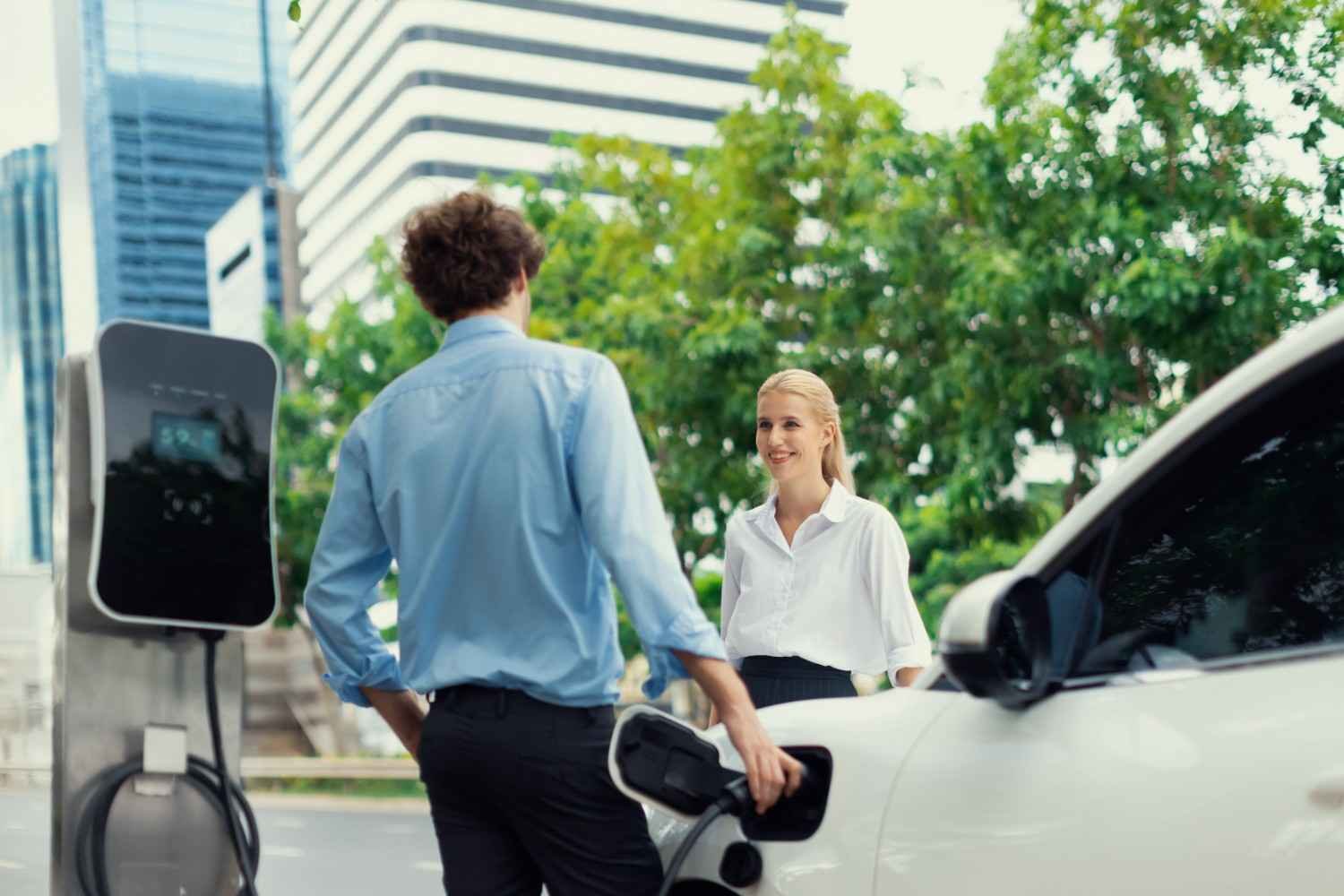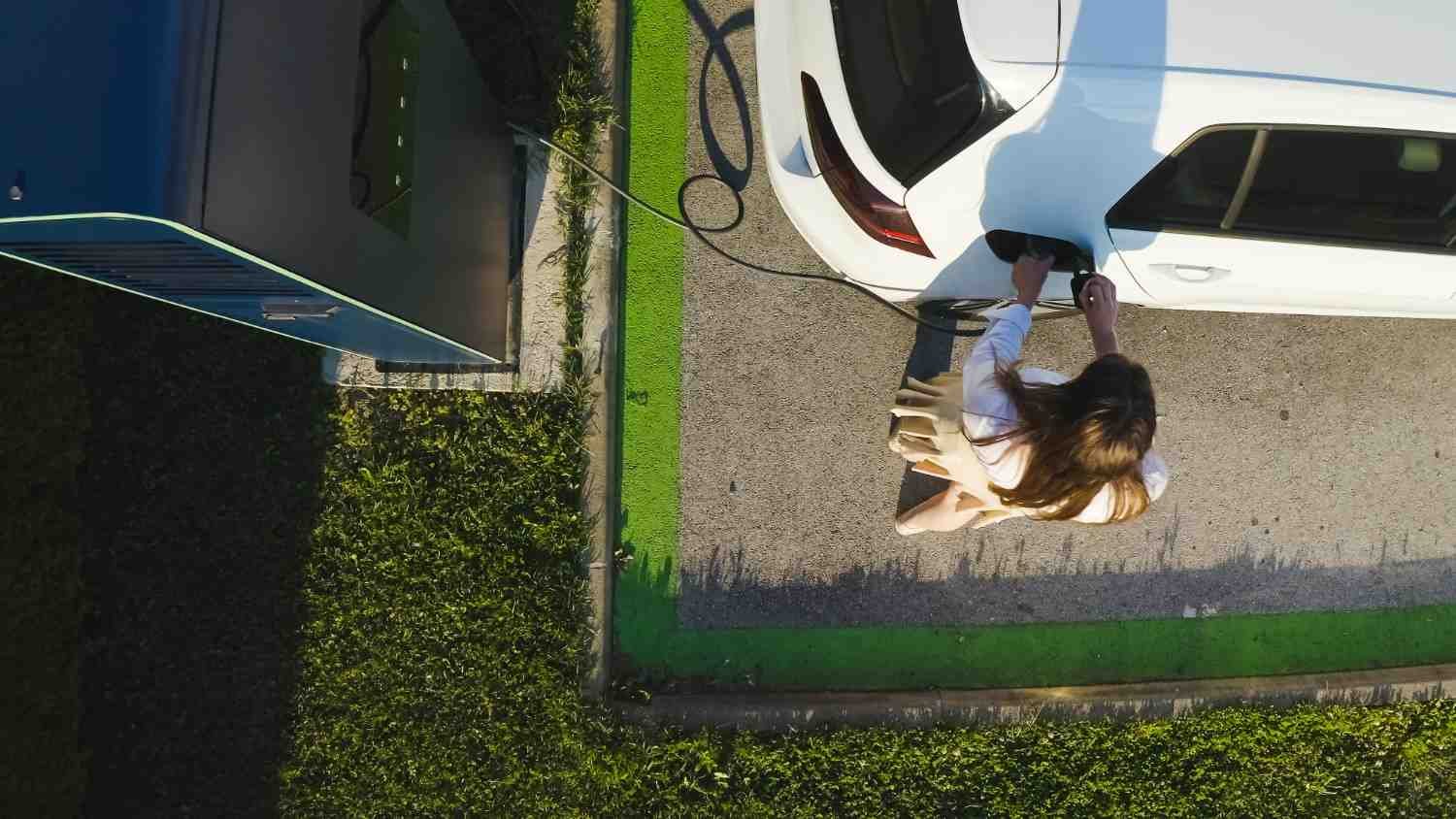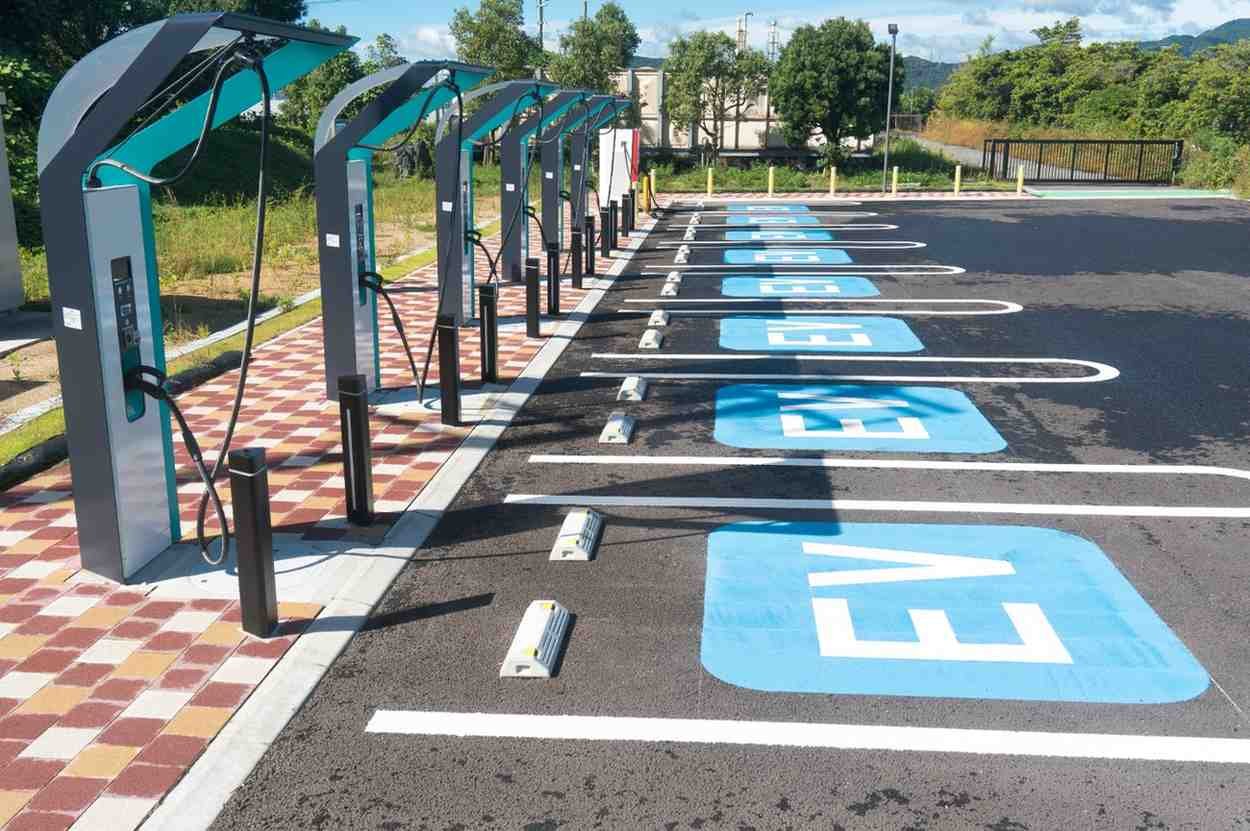How To Charge Your Electric Car In Public: A Complete Guide For 2025
Key Insights
Public charging is becoming increasingly accessible, with different types of chargers (slow, fast, rapid, and ultra-rapid) serving different charging needs - from quick top-ups to long stops.
The UK's rapid charging network has grown significantly, with the number of rapid and ultra-rapid chargers increasing from 5,871 in 2021 to 14,471 by the end of 2024 - a clear sign of improving infrastructure.
Public charging costs vary between 30-75p per kWh depending on charging speed, but drivers can save 20-50% on these costs through The Charge Scheme's salary sacrifice program.
Finding a charger is easier than ever with various apps and real-time information about charger availability, working status, and user reviews helping drivers plan their journeys effectively.
The transition to electric vehicles has never been more exciting in the UK, with public charging infrastructure expanding rapidly to meet growing demand. As of early 2025, the UK has approximately 74,611 public charging points, with new installations happening daily. Yet for many drivers considering the switch to electric, public charging can seem daunting at first.
Whether you're a city dweller without home charging, a commuter needing regular top-ups, or someone planning long road trips across the country, understanding public charging is essential. For someone living in a flat, reliable neighbourhood charging points might be your lifeline. For the daily commuter, workplace chargers or strategic fast-charging stops could be the perfect solution. And if you're frequently travelling long distances, knowing the ultra-rapid charging network along motorways becomes crucial.
The good news? Public charging is becoming increasingly convenient and accessible. Ultra-rapid chargers, which can add hundreds of miles of range in just 20-30 minutes, are being installed across the country. Meanwhile, innovative solutions like The Charge Scheme are making public charging more affordable through salary sacrifice, helping drivers save 20-50% on their charging costs.
In this guide, we'll walk you through everything you need to know about public charging - from finding charging points and understanding different connector types to maximising savings and following charging etiquette. Whether you're planning your daily commute or mapping out a long-distance journey, you'll learn how to make public charging work for you.
Types Of Public Chargers
When you're charging your electric car in public, you'll encounter several different types of chargers. Understanding these different options helps you choose the right charger for your needs and manage your charging time effectively.
Image source: Evesco
Slow Chargers (Up To 7kW)
These are similar to what you might have installed at home and are commonly found in places where cars are parked for longer periods:
Shopping centres,
Public car parks,
A slow charger typically adds around 20-30 miles of range per hour of charging. While not ideal for a quick top-up, they're perfect for overnight charging or during a full day at work.
Fast Chargers (7-22kW)
Fast chargers offer a significant step up in charging speed and are becoming increasingly common in:
Supermarkets,
Leisure centres,
Town centre car parks.
Depending on your car's capability and the specific charger, you can expect to add 60-90 miles of range per hour. This makes them ideal for a meaningful charge while you're shopping or during other activities lasting a few hours.
Rapid Chargers (50kW)
Rapid chargers are the workhorses of public charging infrastructure, providing quick charging for most modern electric cars:
Service stations,
Dedicated charging hubs,
Major retail locations.
These chargers can typically add 100-150 miles of range in about 30-45 minutes, making them perfect for longer journeys when you need a quick boost.
Ultra-Rapid Chargers (150kW+)
The newest and fastest charging option, ultra-rapid chargers are making long-distance electric car travel easier and more convenient:
Motorway services,
Major transport hubs,
Modern charging stations.
With speeds of 150kW, 250kW, or even 350kW, these chargers can add up to 200 miles of range in just 20 minutes - perfect for minimal stops on long journeys. However, it's important to note that your car needs to be compatible with ultra-rapid charging to take advantage of these speeds.
Rapid And Ultra-Rapid Charger Expansion: Past Vs Present
The UK's rapid charging network is growing faster than ever. Back in 2021, we had just 5,871 rapid and ultra-rapid chargers across the country. Fast forward to December 2024, and that number has jumped to 14,471!
2024 was a particularly strong year, with 4,535 new rapid or ultra-rapid charge points installed - a 23% increase. Ultra-rapid chargers have seen the biggest growth, with annual installations rising from 36% of new installations in 2021 to 84% in 2024.
Choosing The Right Charger
For example, if you're stopping for lunch on a long journey, a rapid or ultra-rapid charger makes the most sense. But if you're spending the day shopping, a fast charger might be more cost-effective and just as convenient.
Through The Charge Scheme, you can save 20-50% on all these types of public charging, making the switch to an electric car even more affordable. The scheme works across different charging networks, giving you flexibility in where and how you charge.
Finding Public Chargers
Gone are the days of worrying about where to charge your electric car. Here are our top tips on how to locate the perfect charging spot for your journey.
Popular Charging Networks
The UK has several major charging networks, each with its own app and payment system:
Pod Point - Often found at supermarkets and retail parks,
BP Pulse - Wide coverage across the UK, including many rapid chargers,
InstaVolt - Known for reliable rapid charging and simple contactless payment,
GRIDSERVE - Modern charging hubs with multiple ultra-rapid chargers.
Smart Ways To Find Chargers
Finding a charger is as simple as using your smartphone. Several apps can help you locate nearby charging points. Some examples include:
Zap-Map: The UK's most popular charging app, showing real-time availability,
PlugShare: A worldwide database with user reviews and photos,
Your car's built-in navigation system (available in most EVs).
Planning Longer Journeys
Taking a long trip? A bit of planning goes a long way:
Check the range of your specific car model,
Look for rapid chargers along your route,
Consider stopping points that align with natural breaks (lunch, coffee, etc.),
Have a backup charging location in mind, just in case.
Understanding Availability and Reliability
Most charging apps now show real-time information about:
Whether chargers are currently in use,
If they're working properly,
What speeds are available,
Recent user reviews and experiences.
Top tip: Save your favourite charging locations in your preferred app. It's particularly helpful for remembering reliable chargers along routes you frequently travel.
You can see some screenshots from the ZapMap mobile app below. These show the charging stations across London through the colourful pins dotting the map. The close-up of central London reveals real-time info for MFG Newington station, including price, availability, and payment options at your fingertips. The third image shows how much information ZapMap provides about each charging station. These apps are making EV ownership so much more accessible for EV drivers – no more range anxiety with this coverage!
How To Use Public Chargers
Charging your electric car in public might seem daunting at first, but it's quite straightforward. Let's break down the process into simple steps.
Step-By-Step Guide
Before You Arrive
Check your car's connector type (most UK EVs use either Type 2 or CCS),
Locate a compatible charger using your preferred app,
Check if you need to download a specific charging network app.
When You Arrive
Park close enough for the charging cable to reach easily,
Open your charging port (usually via a button inside your car or on your key),
If using a rapid charger, remove the correct connector for your car,
Plug in - you'll usually hear a click when it's properly connected.
Starting Your Charge
Most chargers offer several ways to pay:
Tap your contactless card,
Use the network's app,
Scan a QR code,
Use an RFID card (like a membership card).
During Charging
Your car and the charger will show the charging progress,
Many apps let you monitor charging remotely,
You'll receive a notification when charging is complete,
Some networks even let you join a virtual queue for busy locations.
Common Connector Types
Different cars use different connectors, but don't worry - it's easy to identify which one you need:
Type 2: Most common for AC charging (slow and fast chargers),
CCS: Standard for DC rapid charging,
CHAdeMO: Found on some Japanese cars like older Nissan Leafs.
Troubleshooting Tips
Sometimes things don't go quite to plan. Here's what to do if:
Charger won't start: Check you're properly plugged in and try restarting the charge,
App issues: Most chargers have a phone number you can call for help,
Cable won't release: Check your car is unlocked and the charging session has ended.
Costs and Payment
Understanding public charging costs is crucial for managing your EV running expenses. The good news? With solutions like The Charge Scheme, charging your electric car can be more affordable than you might think.
Understanding Charging Costs
Public charging costs vary depending on:
The type of charger you're using,
Which network you're on,
The time of day,
Your location.
Here's a general breakdown of what you might expect to pay:
| Type of Charger | Speed | Typical Cost Per kWh | Best For | Common Locations |
|---|---|---|---|---|
| Slow Chargers | 3-7kW | 30-40p | Overnight or all-day parking | Residential streets, car parks, workplaces |
| Fast Chargers | 7-22kW | 40-50p | Shopping trips, charging out and about (2-3 hours) | Supermarkets, shopping centres, |
| Rapid Chargers | 50kW | 50-65p | Quick top-ups, coffee breaks (30-45 minutes) | Service stations, dedicated charging hubs, retail parks |
| Ultra-rapid Chargers | 150kW | 65-75p | Minimal stops on long journeys (15-20 mins) | Motorway services |
Payment Options
Most networks offer several ways to pay:
Pay-as-you-go with contactless,
Network-specific apps,
Monthly subscriptions,
RFID cards.
Saving Money Through Salary Sacrifice
Here's where it gets interesting. Through The Charge Scheme, you can save significantly on all your charging costs:
20-50% savings on public charging,
Works across different networks,
Deductions come from your pre-tax salary,
No need to juggle multiple subscriptions.
For example, a typical charging session that would normally cost £20 might only cost £10-£16 through salary sacrifice, depending on your tax rate.
Smart Charging Tips to Save Money
Use off-peak charging where possible,
Compare network prices before charging,
Look for free charging locations (some supermarkets and shopping centres),
Consider combining charging with your regular activities (like shopping or gym visits).
Best Practices
Being a considerate EV driver helps everyone in the charging community. Here are the key things to keep in mind when using public chargers.
Charging Etiquette
When publically charging your EV, it is important to consider other drivers. It is common to hear horror stories of people hogging EV chargers, unplugging other people’s EVs or leaving the charging station untidy.
Do's
Move your car once charging is complete,
Share your charging experiences on apps like Zap-Map to help others,
Leave the charging area tidy,
Only park in EV charging bays when actually charging your car!
Don'ts
Block access to chargers when not charging,
Unplug other cars (even if they're finished charging),
Leave cables lying around,
Take up rapid chargers for longer than needed.
Safety First
Keep these safety tips in mind:
Check cables for damage before using,
Don't force connectors - they should click in easily,
Keep the charging port cover closed when not in use,
Handle cables carefully in wet weather.
How To Maximise Your Charging Experience
Time Management
Use rapid chargers for quick top-ups on long journeys,
Plan to charge around natural breaks like coffee stops,
Consider charging to 80% at rapid chargers - it's usually quicker than going to 100%,
Use slower chargers for longer stays to save money.
Battery Care
Try to keep your battery level between 20% and 80% for everyday use,
Only charge to 100% for long journeys,
Use rapid chargers sparingly - they put more stress on the battery,
Consider weather conditions - extreme temperatures can affect charging speed.
Common Mistakes to Avoid
Not checking if a charger is compatible with your car,
Forgetting to end your charging session properly,
Not having a backup charging location planned,
Letting your battery get too low before looking for a charger.
Common Charging Problems and How to Solve Them
Even the most experienced EV drivers occasionally hit a snag when charging in public. Let's look at some real-world issues you might encounter and how to solve them.
When Your Charge Won't Start
There's nothing more frustrating than plugging in and... nothing happens. This is one of the most common issues, and usually has a simple fix: First, check that your cable is properly connected at both ends - you should hear a satisfying "click" when it's fully inserted. If that's not the issue, try unlocking and relocking your car, as sometimes the charging port needs to reset. BP Pulse users often report the app showing "Unable to connect to the charger." If this happens to you, try force-closing the app and reopening it, or simply bypass the app altogether and use contactless payment instead.
The Mysterious Slow Charge
You've found a rapid charger, but your car seems to be charging at a snail's pace. Don't worry, there are several possible explanations:
Cold weather is a common culprit - batteries charge significantly slower when they're cold. If you're charging in winter, your rate might be reduced by up to 30%.
Many dual chargers split their power when both sides are in use. So if someone plugs in beside you, you might suddenly see your charging speed drop.
Your car itself might be limiting the charging speed, especially if your battery is above 80% full. Most EVs automatically slow charging as they approach capacity to protect the battery.
When Your Car Won't Release the Cable
You're charged up and ready to go, but your car has other ideas and won't release the charging cable.
Make sure you've properly ended the charging session in the app,
Checking that your car is unlocked,
Sometimes, locking and unlocking your car again will reset the mechanism.
The Human Element: When Other EV Drivers Aren't Following Etiquette
Sometimes the problem isn't technical but human. You might arrive at a charger to find a fully-charged car still occupying the space. While this situation is improving, "charger hogging" remains the top complaint among EV drivers, with a third of electric car owners frustrated by this issue in UK carparks.
If you encounter this, check if the charging network has a way to send a notification to the other driver. Many modern apps now include this feature. Otherwise, patience is unfortunately your only option - but take heart that as EV etiquette becomes more established, these situations are becoming less common.
The Best Solution: Be Prepared
The most seasoned EV drivers will tell you that preparation is key. Keep multiple EV charging apps on your phone, have a backup charging location in mind for longer journeys, and familiarise yourself with the quirks of different networks you use regularly.
The Future of Public Charging
The UK's charging infrastructure is evolving rapidly to support the growing number of electric vehicles on our roads. Let's look at what's coming next for public charging.
Infrastructure Growth
The government and private sector are working together to improve charging accessibility:
New ultra-rapid charging hubs are being built across the country,
More charging points at destinations like supermarkets and leisure centres,
Improved reliability and maintenance of existing networks.
Government Initiatives
Several key programs are helping to shape the future of charging:
Workplace charging schemes.
These initiatives aim to make charging more accessible, especially for those without home charging options.
Improvements To Expect
The charging experience is set to get even better with:
Plug and charge technology (automatic payment when you plug in),
More reliable charging points,
Faster charging speeds,
Better integration with car navigation systems,
Simplified payment methods.
What This Means For You
Whether you're considering an electric car or already driving one, the future looks bright:
More charging options,
Faster charging speeds,
Better reliability,
Continued cost savings through salary sacrifice,
Improved user experience.
Ready to start your electric journey? You can explore our range of electric cars and see how much you could save through salary sacrifice using our online quote tool.
Last updated: 11.03.25










